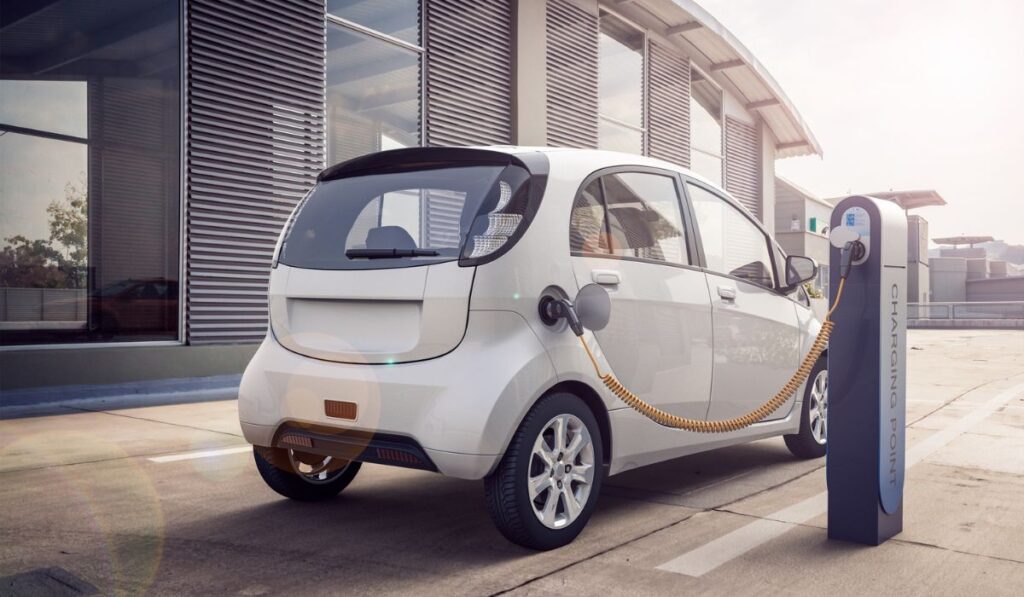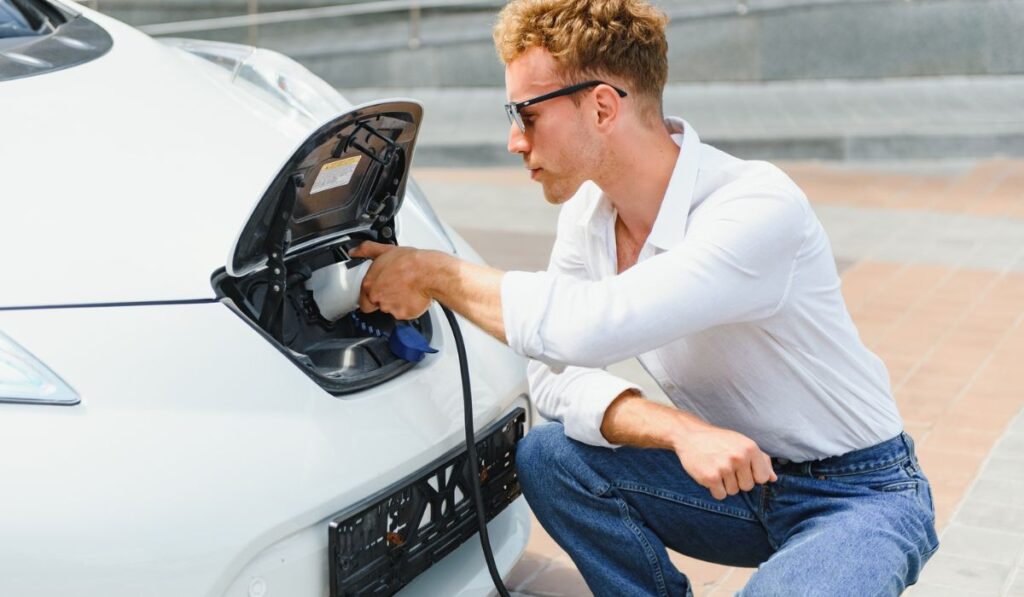Upgrading from a gas-powered car to an electric vehicle (EV) has tons of benefits, not to mention you’re doing your part for the environment. Once you’ve made the switch, you’re assured of lower energy costs, minor maintenance, and better performance. But can you convert a gas-powered car to an electric?
You can technically convert a gas-powered car into an electric vehicle either by yourself or through a specialized conversion company, at great expense. You’ll need to remove the internal combustion engine and replace it with electric motors, a battery pack, and advanced controller.
Before the conversion, it’s essential to consider the space available for the electric motor and large battery pack. Moreover, the chassis should be sturdy enough to support the heavy battery pack. Let’s get started so you understand the EV conversion process.
Can You Convert a Gas-Powered Car to Electric?

Yes, converting a gas-powered car into an electric one is possible. However, you must consider several things, like the type of vehicle, its chassis, drivetrain, and transmission. Ultimately, you want to be sure you want to go all-electric before moving forward.
The ideal vehicle for an EV conversion should have adequate storage space for the battery pack, especially in the trunk or under the seats.
So don’t forget to estimate how many battery modules you need and how to protect them from the elements and physical damage.
Your car’s weight also matters because it affects your energy efficiency. A lightweight vehicle consumes far less power and has a better range.
And since lithium-ion battery packs are typically heavy, do not convert a vehicle with chassis problems. Instead, replace rusty parts whenever possible. You also want to convert a car with a manual transmission rather than an auto because the former is less complex to remodel.
How Does Electric Vehicle Conversion Work?
An electric vehicle conversion involves replacing the internal combustion engine with an AC electric motor and battery pack. You must also take out the gas tank and exhaust system. Finally, you’ll replace the multi-speed transmission with an electronic motor controller.
Here’s how to convert a gas-powered car into an EV:
Remove the ICE Parts
Everything under the hood will have to go, so feel free to gut your vehicle and take out the following:
- Engine
- Transmission
- Radiator
- Catalytic converter and exhaust
- Muffler
- Alternator
- Gas tank
You can sell these parts at your local junkyard and recoup a few bucks.
Install the AC Electric Motor
Install the electric motor in the engine compartment and connect it to a new or remodeled electronically controlled transmission. For a sturdy and safe installation, weld a metal frame to hold it in place and use an adapter plate to link it with the transmission.
Install the Motor Controllers
Your electric car needs a motor controller with an inverter to convert the DC power supply from the battery into alternating current (AC) required by the AC motor.
The controller also determines the speed of the motor and, ultimately, your vehicle’s speed by varying the AC frequency. Follow your EV conversion kit manual instructions to install the motor controller correctly.
Mount the Lithium-Ion Battery Pack
Depending on the size and shape of your battery pack, you can install it in the trunk, engine compartment, gas tank space, or under the seats.
Ensure the battery is mounted correctly and balanced so it won’t be affected by vibrations.
Wire the Electrical System
Connect the battery pack and motor to the controller. You must also reconnect the lighting, climate control, and infotainment system to the new power supply.
Install a New Steering and Braking System
While most gasoline vehicles have hydraulic power steering, your EV needs an electric hydraulic pump to control the steering. It’s also good to install a regenerative braking system to recycle energy back to your battery.
Install the Charging & Battery Management Systems
The charging and battery management systems (BMS) are crucial electronic components you can’t do without. Once you’ve put them in place, it’s time to install the charging port, ideally in the fuel tank door or under the hood.
Run a Safety Inspection
Before you hit the road in your custom EV, you need to test that all systems are working correctly and the vehicle is safe. You must then have it inspected by your local DMV to ensure it’s street-legal.
Can You DIY an Electric Car Conversion?
You can do an electric car conversion yourself if you have solid electrical and mechanical experience. However, unlike jack-of-all-trades types of tasks like doing an oil change, EV conversion takes a lot of knowledge from multiple disciplines, time, and patience.
You need a good understanding of electrical machines like motors. You also need a substantial grasp of power electronics concepts to know how to use the motor speed controller, charging system, and BMS.
Moreover, you must understand essential mechanical concepts, fabrication, and electrical wiring principles. So while it’s humanly possible to go the DIY way, it’s going to be challenging if you don’t understand the principles, even if you hate turning down challenges.
Most people don’t have the skills (and hate overhauls, anyway), so they hire an EV conversion company to handle the tedious process.
However, if you really want to do a DIY conversion without enrolling at the nearest technical college, go for an EV conversion kit. Many of these contain all the necessary parts and a detailed guide to walk you through the process.
How Much Does it Cost to Convert a Car to Electric?

Generally, the cost of converting a gas-powered car to an electric one can vary dramatically, and some people have spent upwards of $95,000.
It depends on your chosen base car, the conversion kit price, and the labor involved. You can expect the cost of an EV conversion kit to range from $7,500 to $25,000 or slightly more.
Since some conversion kits don’t include the cost of battery packs, you may have a few extra thousand dollars. However, if you strip down your existing car and buy a high-performance Tesla motor and battery pack, you could easily pay $40,000 or more.
A new Tesla battery pack costs around $22,500, but you can get a remanufactured one for $9,000 to $13,000. A powerful and reliable AC motor can cost anything from $5000 to $11,900. If you factor in the electronic components, interior upgrades, and labor, you could spend $5000-$10,000 extra.
